Libya is a country in North Africa. Oil, which is found in large quantities, has generated a lot of wealth for the nation. Tripoli is the capital and also the largest city in Libya.
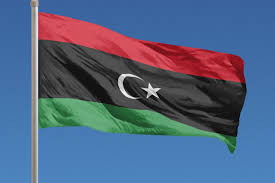
The country has 5,047,000 inhabitants (2018 estimate), and its area is 1,676,198 km2.
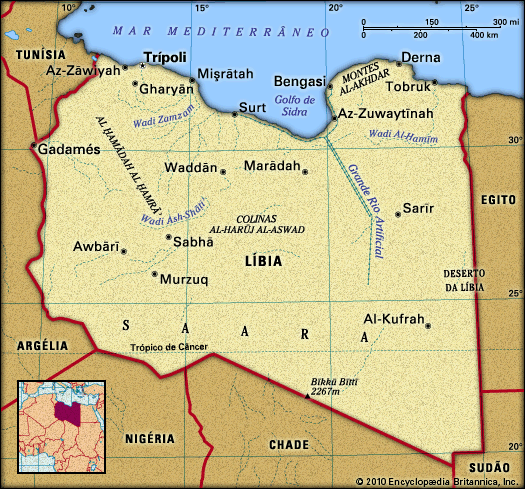
Geography
Libya is bordered by Tunisia, Algeria, Niger, Chad, Sudan and Egypt. To the north, it is bathed by the Mediterranean Sea.
The country is located in the Sahara, the largest desert in the world. Rocks and sand make up practically all of its landscape, although there are some oases, which are small areas with water and vegetation in the middle of the desert. Most of the population and farming areas are found in the northwest, close to the coast. In the northeast, mountains rise.

The country’s climate is predominantly hot and dry. Only the coast has colder and rainier winters. River beds are dry for most of the year. To solve the problem of water supply and irrigate agricultural land, Libya developed a project called the Great Artificial River. Groundwater from the desert is extracted and channeled to coastal cities.
Flora and fauna
There is little vegetation in Libya. Among the animals are the hyena, the fox, desert rodents, the jackal, the gazelle and the wild cat. Birds include the eagle, the hawk and the vulture.
Population
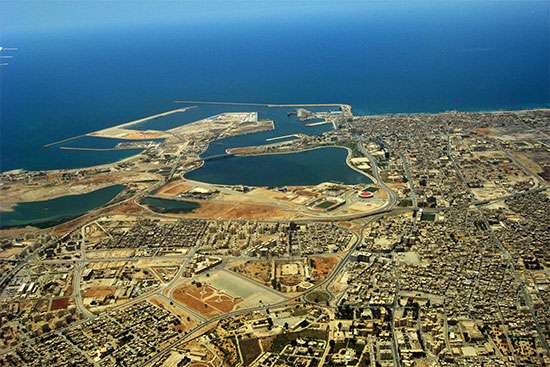
Libya’s population is mostly Arab, but has been predominantly Berber in the past. Today, the Berbers have adopted Arab culture. There are also small groups of Africans from other parts of the continent, in addition to Italians, Greeks and other peoples. The main language is Arabic, and the majority of Libyans are Muslims, belonging to the current of Islam known as Suna.
Economy
Libya’s economy is based on the exploitation of oil, which is sold to other countries. There are also large reserves of natural gas and iron ore. A large part of the population works with the provision of services in the public sector, health care and the financial sector. The industry produces metals, food, cement and chemicals.
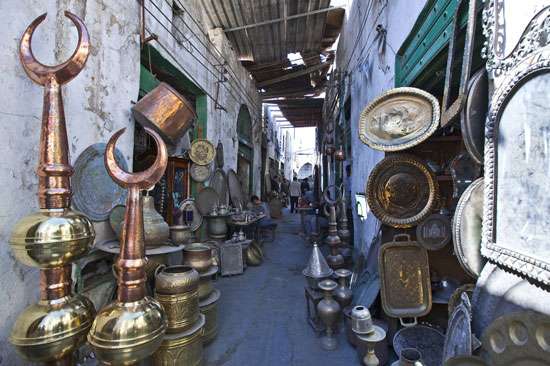
Agriculture has less importance in the country’s economy. The main crops are watermelon, potatoes, onions, tomatoes and dates. Goats and sheep are also raised.
History
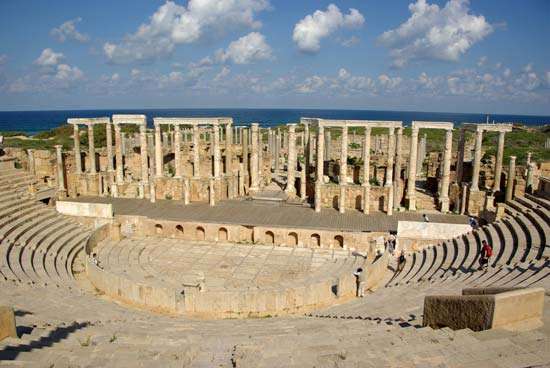
In the past, Libya was under the control of several peoples, including Africans, Greeks and Phoenicians. In the 2nd century BC, the ancient Romans made the region part of their empire. In A.D. 642, Arab troops settled there. Many Berbers converted to Islam. In the early 16th century, the Ottoman Empire conquered the region.
The Italians invaded Libya in 1911, but the Libyans never accepted their rule. In World War II, which ended in 1945, Italy lost control of the country
In 1951, Libya became an independent monarchy, a form of government in which the head of state is a king or queen. In 1969, however, a group of army officers led by Colonel Muammar al-Gaddafi dismissed the king. Gaddafi came to govern Libya and, in 1977, changed the country’s official name to Libya’s Socialist Arab People’s Democracy. “Jamairia” means “brotherhood”.
In the 1950s, Libya discovered oil reserves in its territory and began to invest its income in the construction of houses, roads, schools and military power. Several countries have accused Gaddafi of supporting terrorist groups that were attacking Israel.
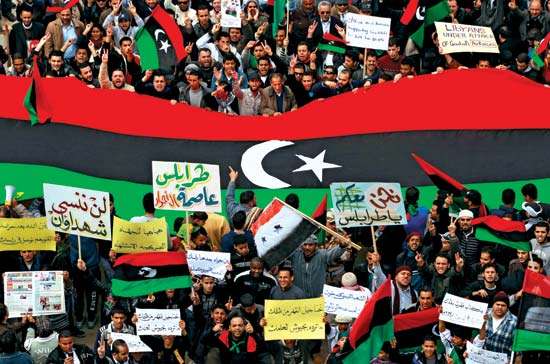
In 1988, terrorists blew up an American plane over the city of Lockerbie, Scotland, killing 270 people. For years, Gaddafi protected two Libyans accused of the attack. In response, the UN boycotted international trade relations with Libya. In 1999, Gaddafi finally allowed the accused to go to trial, and a Scottish court found one guilty. In 2003, the UN released other countries’ trade with Libya.
In February 2011, many people in the country started organizing protests against Gaddafi. They called for the leader to resign, but he refused to leave power. Libyan government forces faced the rebels, and thousands of people tried to flee to Tunisia and Egypt. Rebel forces in many areas of the country have started to strike back; in August, they invaded Gaddafi’s headquarters in Tripoli. In October, rebel forces arrested and killed Gaddafi.
